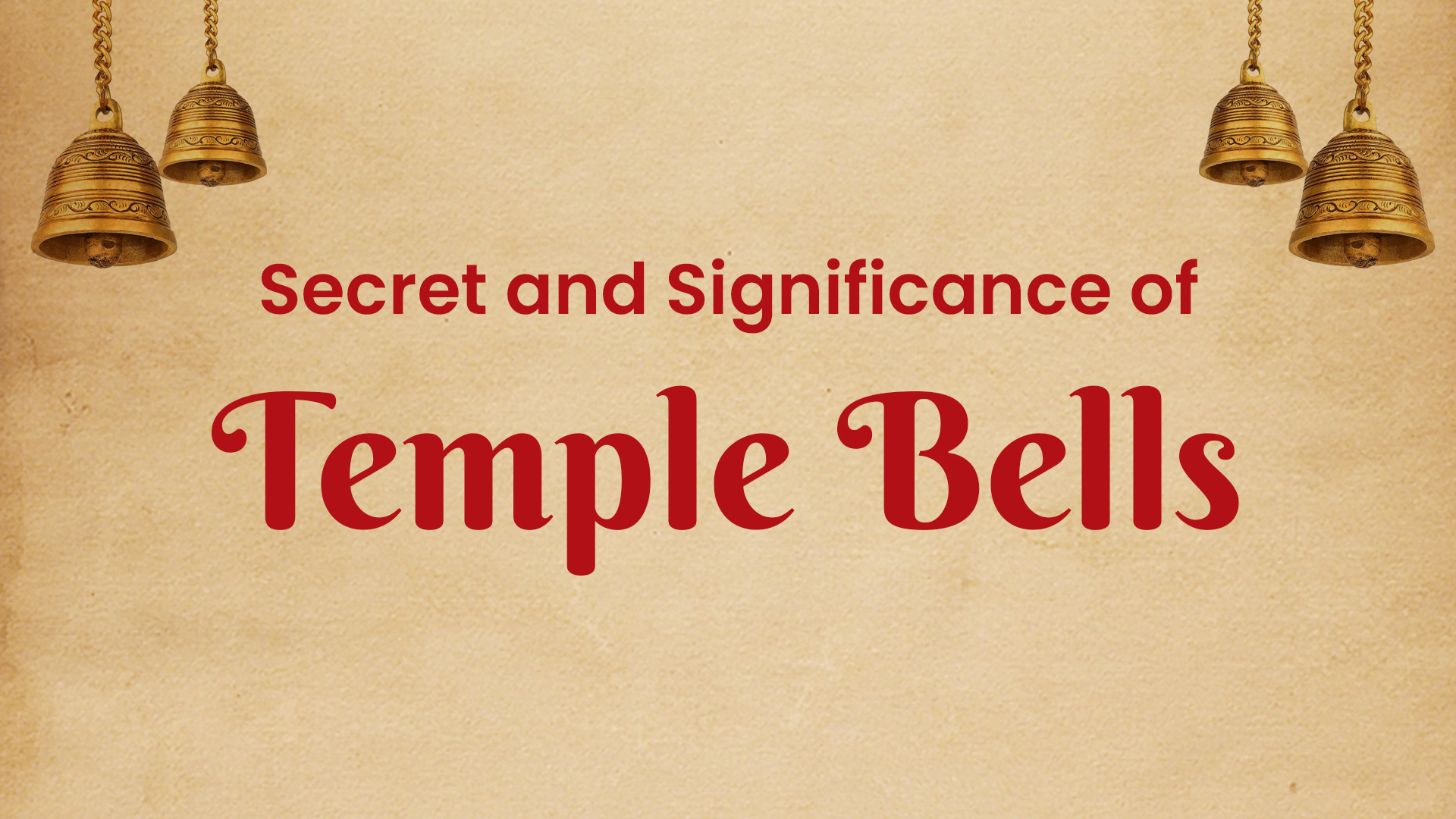In Hindu Vedic Sanatan Dharma, every ritual and tradition carries its own profound significance, with specific symbolic meanings behind the items used. Have you ever experienced the ritual of ringing a bell in Hindu temples? But do you know why it’s done before worshipping God? The secrets and significance of temple bells hold the answer.
In all temples following the Hindu Vedic Sanatan Tradition, the bell is placed before the idol of God. It’s customary to ring the bell upon entering the temple and before beginning any Vedic puja or worship. A verse in our Vedic Parampara explains the reasoning behind this tradition.
आगमार्थां तु देवानां गमनार्थं तु रक्षसाम्।
घण्टारवं करोम्यादौ देवताह्वान लाञ्छनम्।।
– वैदिक परम्परा, सुभाषित रत्न मन्जुषा
“We are supposed to ring the bell before worshipping God or before commencing puja to awaken the God there and drive out the demons.”
In the ancient language of Sanskrit, the Bell is known as ‘Ghanta’ or ‘Ghanti’. The ringing of the bell, known as Ghanta Naad, serves as an announcement of the arrival of deities to dispel the demons. Here, “deity” and “demon” represent constructive positive attributes and destructive negative attributes, respectively, rather than specific individuals or beings. The 16th chapter of the Shrimad Bhagwad Gita, titled ‘Daivasur Sampad Vibhag Yoga,’ provides a detailed explanation of these attributes. Let’s explore a verse from that chapter.
द्वौ भूतसर्गो लोकेस्मिन् दैव आसुर एव च।
– श्रीमद भगवत गीता, १६:६
“There are two types of innate characteristics present in human beings – divine and demonic.”
As the divine and demonic qualities coexist within us, ringing the bell upon entering the temple awakens our inner divine powers and dispels negative energies. This act serves to cleanse our conscience, ignite positive qualities such as patience, nonviolence, happiness, and benevolence, and eliminate negative attributes like conceit, pride, harshness, and ignorance.
To delve deeper into the meaning of ringing the bell, it is important to have a basic understanding of Vastu Shastra and Shilpa Shastra. The placement of the temple bell is intentional, positioned at the center of the temple dome and in front of the deity’s idol. The center of the dome, known as ‘Brahma Sthan,’ symbolizes the Space Element, which is associated with the soul or divine energy. The Taittiriya Upanishad of Yajura Veda supports this concept.
एतद् आत्मनः आकाशः संभूतः।
– तैत्तिरीय उपनिषद
“The sky element also known as the space element is originated from the soul or the divine power.”
The bell is strategically placed to produce a specific sound when rung. This sound, due to the temple’s design, travels to our subtle body and activates our Anahata Chakra, also known as the Heart Chakra. For those familiar with Chakras, the seven chakras are distributed with three in the lower body, three in the upper body, and one in the middle. The heart chakra, situated in the middle, acts as a balancing force for the lower and upper chakras, possessing harmonizing energy.
In addition to representing the space element, the central part of Vastu is often referred to as the heart of Brahma Ji or Vastu Purush. When we ring the temple bell, the sound it produces activates our Anahata chakra. The term “Anahata” signifies the absence of sound, and the purpose of ringing the bell is to generate a sound that can stimulate our Anahata chakra, leading us to connect with the divine presence within us. The belief in the presence of God within everyone is echoed in the Shrimad Bhagvat Gita, where Lord Shree Krishna emphasizes this concept.
ईश्वरः सर्वभूतानां ह्रुदेशऽर्जुन तिष्ठति।
– श्रीमद भगवत गीता, १८:६१
“God resides within all of our hearts.”
When the bell’s sound activates our Anahata chakra, this activated heart chakra creates a receptive state within us, allowing us to receive universal energy. The temple’s design places the bell at the center of the dome, and the sound it produces travels within the dome before reaching us. As the sound of the bell reaches our ears after traveling through the dome, it brings a sense of peace, providing present and future happiness. The transmission of universal energy within us, through the activation of our heart chakra, enables us to retain happiness for an extended period.
Apart from these two benefits, the Skand Purana states that ringing the bell in the temple eradicates all the sins from our previous births. According to the verse in Skand Purana, the sins accumulated over a person’s previous 100 births are dispelled by ringing the bell in the temple. Another purpose of ringing the bell is to announce one’s arrival to God.
The placement and design of the bell in the temple are not only significant but also the materials used in making the bell carry great importance and symbolism. In Vedic Astrology, five major planets are considered: Mars, Jupiter, Venus, Saturn, and Mercury. Similarly, Vastu Shastra recognizes five elements: Space, Air, Fire, Water, and Earth. Scriptures mention that the bell should be made of five specific metals: Gold, Silver, Copper, Zinc, and Iron. By touching the bell, one can receive the benefits associated with all five metals, which are correlated with the five elements of Vastu and the five major planets.
With its unique design and placement, ringing the bell prepares us to receive universal energy. Temples are places to receive and store universal energy within us, but to do so, our bodies must align with that energy. Ringing the bell serves to bring this necessary alignment to our bodies. Hence, before initiating any puja or yagna, do not forget to ring the bell as a precursor to praying to God. Similarly, when visiting a temple, remember to ring the bell before praying to God to achieve the required alignment. I firmly believe that aligning your body with universal energy will indeed help you attain peace and happiness in your life.
Shubham Bhavatu.








